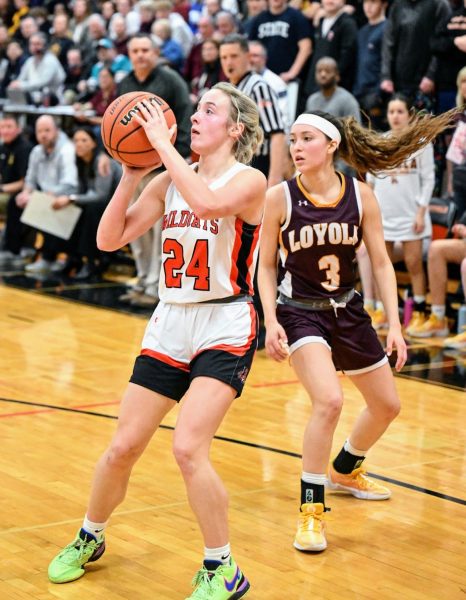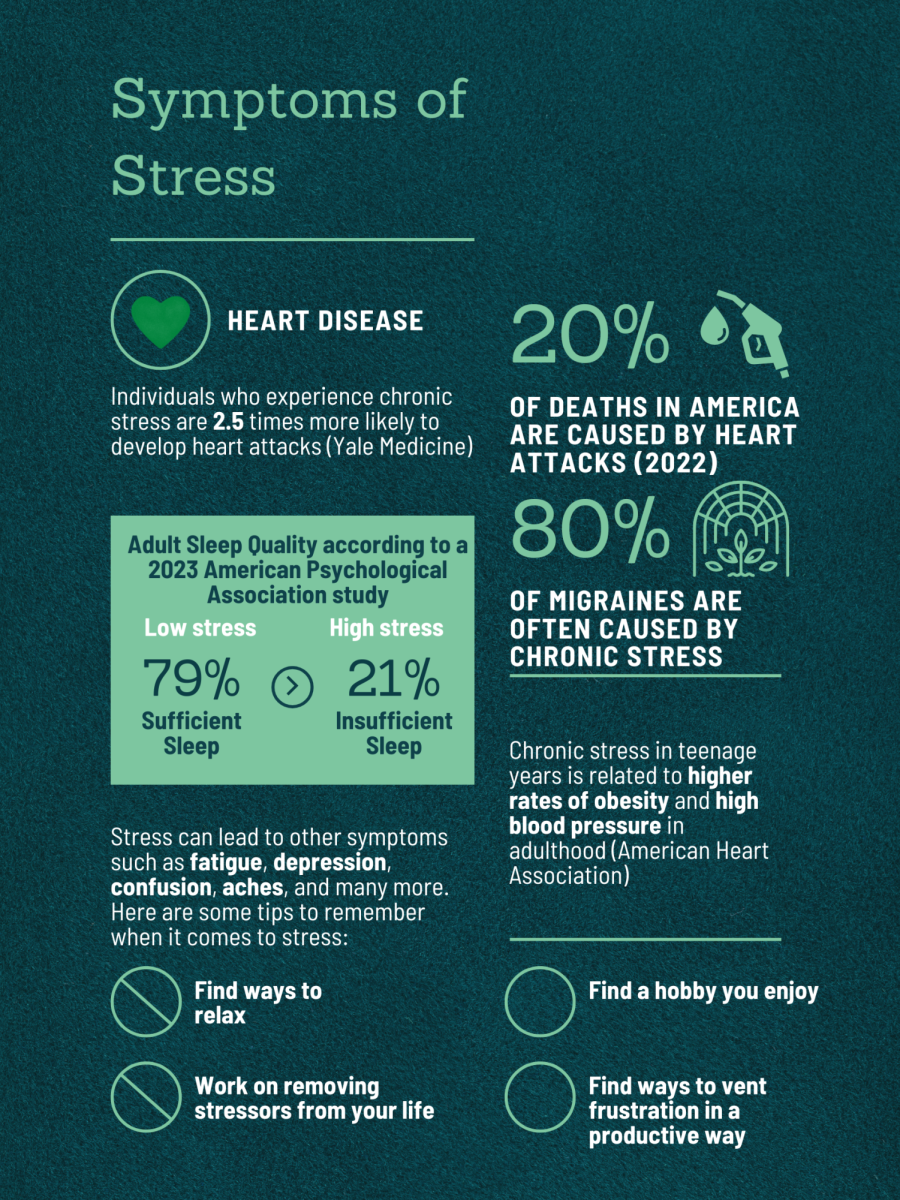Change in Sports:
In 1972, Title IX was passed, prohibiting gender-based discrimination in any federally funded program, including education and athletics. Since then, participation and equality throughout women’s sports have increased.
With this being said, the future of women’s sports is constantly growing and changing. Athletes like Iowa’s Caitlin Clark have contributed in bringing increased attention to women’s sports.
Media coverage on women’s basketball has exponentially increased, as a whopping 12.3 million viewers watched the Iowa women play against Louisiana State University (LSU) on April 1.
This growing popularity aids the progression of recognition for women’s basketball as well as all women’s sports. The future of these programs is ultimately unknown, but athletes like senior Rachel Rule have thoughts for the upcoming times.
“I’m really excited for the future of women’s basketball and just excited to watch [Clark] and see what she can do,” Rachel Rule said.
Role Models and Standards:
Most every athlete looks up to collegiate and/or professional athletes for both motivation and inspiration, viewing them as people that they ultimately strive to be.
Like Clark, Sabrina Ionescu, a former basketball player for the University of Oregon and current WNBA guard for the New York Liberty, has served as an impactful role model in the lives of many young female athletes, one being senior basketball player and cross country runner Kate Rule.
“[Ionescu] has definitely been someone who has made an impact on my love for basketball through her passion for the sport,” Kate Rule said.
With positive role models comes another stressor, that of beauty standards.
Although role models are meant to serve positively, reaching to fit in the shoes of a marketable female athlete can lead to an unfortunate switch in goals. An athlete might start to reanalyze her appearance as opposed to how she could better perform.
Instances of these marketable athletes appear everywhere, including through advertisements, social media and even daily conversations. By looking for strength and confidence in female athletes, reoccurring stigmas can be reversed, and real chance can transpire.
Pressures of Performance:
Being multi-sport athletes, Kate and Rachel Rule both face the external and internal pressures of performance. As they look to their role models for guidance, many athletes are looking up to their teammates as well. Senior varsity soccer goalkeeper Kate Hopma recognizes this as well.
“I definitely looked up to some of the older girls on my club team,” Hopma said. “I also really looked up to seniors my sophomore year.”
By having a role model, many young athletes will strive to play at the same level as them. Sometimes, a role model may not even be an athlete in the same sport,
“Coach [Annemarie] Sampson is really supportive,” Rachel Rule said. “She’s gone to many of our basketball games and is just a [huge] supporter for many women’s sports in general.”
Kate Rule said that Coach Sampson has encouraged athletes in many ways.
“She’s really just encouraged us through our sports,” Kate Rule said. “She’s definitely a role model for us.”
Changes and Obstacles:
Many women in sports hope for equality. If changes are made where changes are requested, this hope can be fulfilled. Coach Annemarie Sampson, the girls cross country head coach and entrepreneur of Performance Education for Athletes and Coaches (PEAC) said that voice is important.
“Change is going to require everybody taking a step back,” Coach Sampson said. “We need to look at what we need and ask for it.”
Many uncontrollable factors can prevent positive change.
“A lot of girls drop out of sports because they don’t have a sports bra,” Coach Sampson said.
Different tax brackets will offer different athletic opportunities. Some female athletes have never been educated that sports bras can be a complete game changer. The reasons go further than sports bras; girls have many restrictions that can make playing a sport way more difficult than is necessary.
Setbacks:
With women’s sports moving forward in some positive directions, notable setbacks remain important to analyze and correct in order to fully progress. According to the Women’s Sports Foundation (WSF), many girls drop out of sports at twice the rate of boys by age 14, many due to a “lack of access.”
Through their 25 years of research, WSF has also found that facilities and space to play for girls are not as optimal as they are for boys. Coaches also are conducive to the resistance of these athletes’ desires to continue on with their sport, as many coaches do not fit the prerequisites.
58.7% of women’s collegiate head coaches were men, while only 5.8% of head coaching jobs in men’s collegiate sports were held by women, according to NCAA research done by “The Atlantic.”
Change For the Future:
Change is possible. It occurred in 1972 and it can further be enhanced. With Libertyville’s new addition of the sport of girls flag football, we are starting to equate the number of opportunities. Now, advocating for change in the quality of women’s sports comes next.
Many popular female athletes have brought a spotlight that can bring both inspiration and high expectations for what future athletes and athletic programs can bring. The future for women’s sports may not always be certain, but it definitely has the capability to change.







